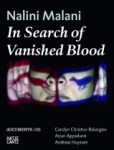Ambika Rajgopal of Saffronart shares a note on Nalini Malani’s upcoming exhibition in Belgium
London: The Belgian museum Centre de la Gravure et de l’Image imprimée will host the first ever exhibition of the Indian artist Nalini Malani in the country as part of Europalia. It is the first time that an exhibition links the artist’s installation work to her printed work.

Memory, 2009, Nalini Malani. Image Credit: http://www.artslant.com/ny/works/show/217399
Malani’s oeuvre has long since explored the aftermath that the India- Pakistan partition has had on individual sensibilities. Herself, a refugee of the partition, through her work Malani denounces the rampant violence against women, which proliferated during the partition time. Though her characters are often derived from myths, the language she incorporates and the stories she tells are contemporary.

The Duck, 2002, Nalini Malani, Lot 23, Saffronart Autumn Art Auction. Image Credit: http://www.saffronart.com/auctions/DurWork.aspx?l=9015
The mythical characters of Cassandra, Medea, Sita and Alice play a recurrent role in Malani’s work. She borrows the Greek tragic character of Medea and contemporizes it so as to infuse her own personal history into it. Through the character of Medea, she links the exploitation of women to the history of colonialism, where in Medea represents the colonized and her husband Jason represents the colonizer.

Cassandra 30 panel polyptych, 2009, Nalini Malani. Image Credit: http://www.artslant.com/ny/works/show/361985
In a similar manner, Malani also manages to retell the tragedy of Cassandra- who was cursed by Apollo and lost her power of persuasion despite being able to prophesize accurately. Cassandra stands as a metaphor for the stifling of the female voice by male dominated society. This myth is at the core of many of the works featured at the exhibition.

In Search of Vanished Blood, 2012, Nalini Malani. Image Credit: http://www.stylepark.com/en/news/observations-in-space-and-time/334166
The work ‘In Search of Vanished Blood’, first created for the Documenta at Kassel in 2012, has five painted, rotating Mylar cylinders, which project shadows on the wall. These cylinders are superimposed with projections from six video sources. The poem translated by Faiz Ahmed Faiz, which gives the work its title, can be heard recited by the artist in the background and imparts the work an imposing acoustic dimension. This work seeks to examine the social structure of the women in India, through the metaphor of different female characters from myths.

Despoiled Shore, 2005, Nalini Malani. Lot number 24. Saffronart Autumn Art Auction. Image Credit: http://www.saffronart.com/auctions/DurWork.aspx?l=9016
Even though she explores traditional morality plays, her work gravitates towards using an excessively new media, which imparts her work with a modern voice. Her work spills out of the pictorial surface so as to cover surrounding space by the inclusion of walls drawings, installations, shadow play, multi projection work and theatre.
Two of Malani’s works are being auctioned in Saffronart Autumn Art Auction on September 24 & 25 2013.
The exhibition commences on September 28th 2013 and carries on till January 5th 2014. For more information visit the website.





